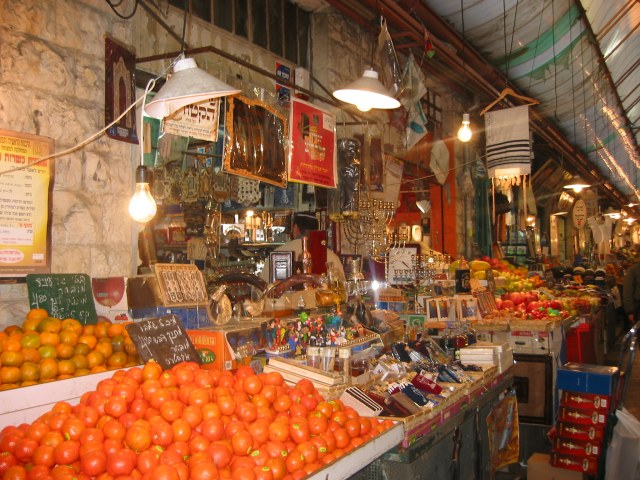You have to go to a propaganda piece written in 1960 to buttress your argument ?
Why not try some independent research.
"..In 1967, Palestinian agricultural production was almost identical to Israel's: tomatoes, cucumbers and melons were roughly half of Israel's crop; plums and grape production were equal to Israel's; and Palestinian production of olives, dates and almonds was higher. At that time, the West Bank exported 80% of the entire vegetable crop it produced, and 45% of total fruit production (Hazboun, S., 1986).
The agricultural sector was hit hard after Israel occupied the West Bank and Gaza Strip. Thereafter the sector�s contribution to Gross Domestic Product (GDP) in the Palestinian Occupied Territories declined. Between 1968/1970 and 1983/1985 the percentage of agricultural contribution to the overall GDP in the West Bank fell from 37.4-53.5% to 18.5-25.4% (UNCTAD, 1990). The labour force employed in this sector has also declined. Between 1969 and 1985, the agricultural labour force, as a percentage of the total labour force, fell from 46 to 27.4% (Kahan, D., 1987).
There has been a continuous decline in the Palestinian cultivated areas in the West Bank since 1967. In 1965, before the Israeli occupation, the actual cultivated area was estimated at 2,435 km2 (Al-'Aloul, K., 1987). The total area fell to 1,951 km2 in 1980. In 1985, the cultivated area reached 1,735 km2, and in 1989, it was 1,706 km2 (UNCTAD, 1990). The average of actual cultivated land in the West Bank, between 1980 and 1994 was 1,707 km2, a reduction by 30% of the area cultivated in 1965.�
Marketing of farm products and their distribution to local and external markets is one of the major obstacles facing Palestinian farmers. Throughout the occupation years, selling Palestinian agricultural products within Israel requires special permits to be issued by the Israeli authorities. Transporting products from north to south in the West Bank has become difficult as well, especially after Israel enforced a closure on East Jerusalem, the main road connecting northern with southern parts of the West Bank. Movement of agricultural products between the West Bank and Gaza Strip is also subject to Israeli control.
The Gulf War in 1991 has also severely affected Palestinian agriculture, since the bulk of exports were previously sent to Arab Gulf countries. Palestinian exports to the Gulf States had previously accounted for approximately $25.4 million per year. As a result of the war, Palestinian exports fell by 14%.
Israel has restricted Palestinian water usage and exploited Palestinian water resources after occupation. Presently, more than 85% of the Palestinian water from the West Bank aquifers is taken by Israel, accounting for 25.3% of Israel�s water needs. Palestinians are also denied their right to utilize water resources from the Jordan and Yarmouk Rivers, to which both Israel and Palestine are riparians. West Bank farmers historically used the waters of the Jordan River to irrigate their fields, but this source has become quite polluted as Israel is diverting saline water flows from around Lake Tiberias into the lower Jordan. Moreover, Israeli diversions from Lake Tiberias into the National Water Carrier have reduced the flow considerably, leaving Palestinians downstream with little water of low quality.
In Gaza, the coastal aquifer serves as its main water resource. Other Gazan water sources, such as runoff from the Hebron hills, have been diverted for Israeli purposes. The Gaza strip, which housed only 50,000 people before 1948 is now one of the most densely populated regions in the world. This is the result of the high levels of forced immigration following the 1948 and 1967 conflicts, and the high rate of natural population increase. Gaza�s coastal aquifer is now suffering from severe saltwater intrusion.
With regard to total water consumption, an Israeli uses 1959 cubic meters per year (CM/year), compared to an average Palestinian use of 238 CM/year.
Israeli restrictions have drastically limited the irrigation of Palestinian land so that today only 6% of the West Bank land cultivated by Palestinians is under irrigation, the same proportion as in 1967. By contrast, about 70% of the area cultivated by Jewish settlers is irrigated.
Comrade Stalin
Donbass

